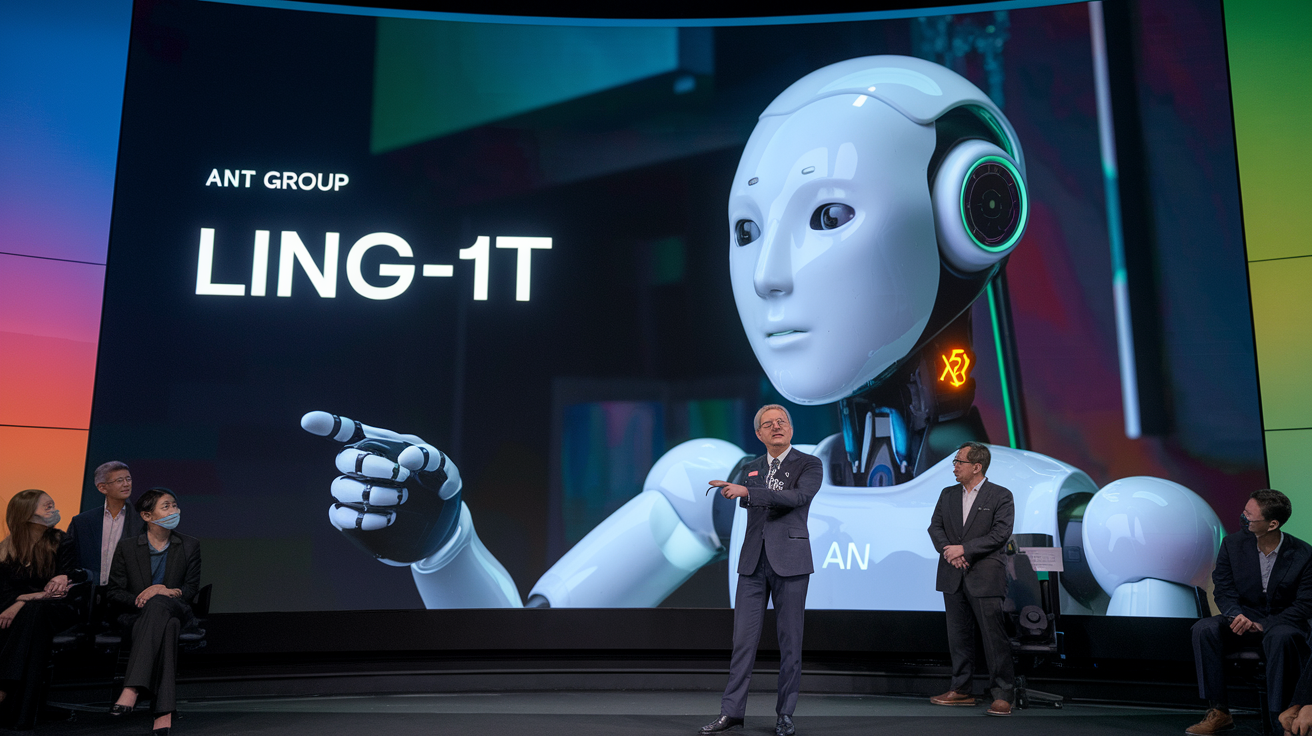Introduction to Ant Group’s Ling-1T
In a monumental leap for artificial intelligence, Ant Group has introduced its new language model, Ling-1T, which boasts an astounding trillion parameters. This unveiling, announced on October 9, positions the Chinese fintech leader at the forefront of AI development, highlighting their commitment to integrating sophisticated reasoning capabilities with computational efficiency.
Significance of the Trillion-Parameter Model
The introduction of trillion-parameter models marks a new frontier in AI, allowing for more complex understanding and generation of human-like text. Ant Group’s Ling-1T is not just another model in the crowded field; it aims to redefine benchmarks for reasoning tasks, setting a new standard for what is achievable in natural language processing.
Balancing Efficiency and Capability
One of the primary challenges in developing AI models is striking a balance between computational efficiency and performance. Ling-1T is designed to address this issue head-on. By optimizing its architecture, Ant Group claims that the model can perform complex reasoning tasks without the excessive resource requirements often associated with comparable models. This efficiency makes it more accessible for practical applications in various sectors, including finance, customer service, and beyond.
Technical Innovations Behind Ling-1T
The development of Ling-1T incorporates several innovative techniques that enhance its reasoning capabilities. Among these innovations is a refined training algorithm that allows the model to learn from diverse data sets more effectively. This results in a greater ability to understand context, nuance, and subtleties in language.
Open Source Approach
Ant Group has taken a bold step by opting for an open-source model, encouraging collaboration and innovation within the AI community. By making Ling-1T publicly available, the company aims to foster a rich ecosystem of developers and researchers who can build upon its foundation. This strategy not only enhances the model’s capabilities through community input but also accelerates the pace of AI advancements.
Targeting Reasoning Benchmarks
One of the critical areas where Ling-1T seeks to make a significant impact is in reasoning benchmarks. These benchmarks are essential for measuring how well AI models can process information, draw conclusions, and make informed decisions. Ant Group’s focus on reasoning reflects a growing recognition that mere text generation is not enough; AI must also demonstrate genuine comprehension of complex concepts.
Potential Applications
The implications of Ling-1T’s capabilities are substantial. In the financial sector, it could revolutionize customer interactions by providing more accurate and context-aware responses. Furthermore, industries like healthcare, education, and entertainment may benefit from the model’s enhanced understanding of nuanced queries, leading to improved user experiences across the board.
Future Prospects and Industry Impact
As Ant Group continues to refine and promote Ling-1T, the model’s influence is expected to ripple through the AI landscape. The company’s emphasis on reasoning and efficiency sets a new benchmark that competitors may feel pressured to meet. This could lead to a wave of innovation as other AI developers strive to enhance their models similarly.
Building a Sustainable AI Ecosystem
Ant Group’s commitment to sustainability in AI development is also noteworthy. By prioritizing efficiency, the company aims to reduce the environmental impact associated with training large models. This focus on sustainability may encourage other tech giants to adopt similar practices, paving the way for a more responsible approach to AI development.
Conclusion
The launch of Ling-1T by Ant Group represents a significant milestone in the evolution of AI technology. Its trillion-parameter architecture, coupled with an open-source approach and a focus on reasoning capabilities, positions it as a potential game-changer in the field. As the AI landscape continues to evolve, Ling-1T may well set the standard for future developments, driving innovation and efficiency across multiple sectors.
